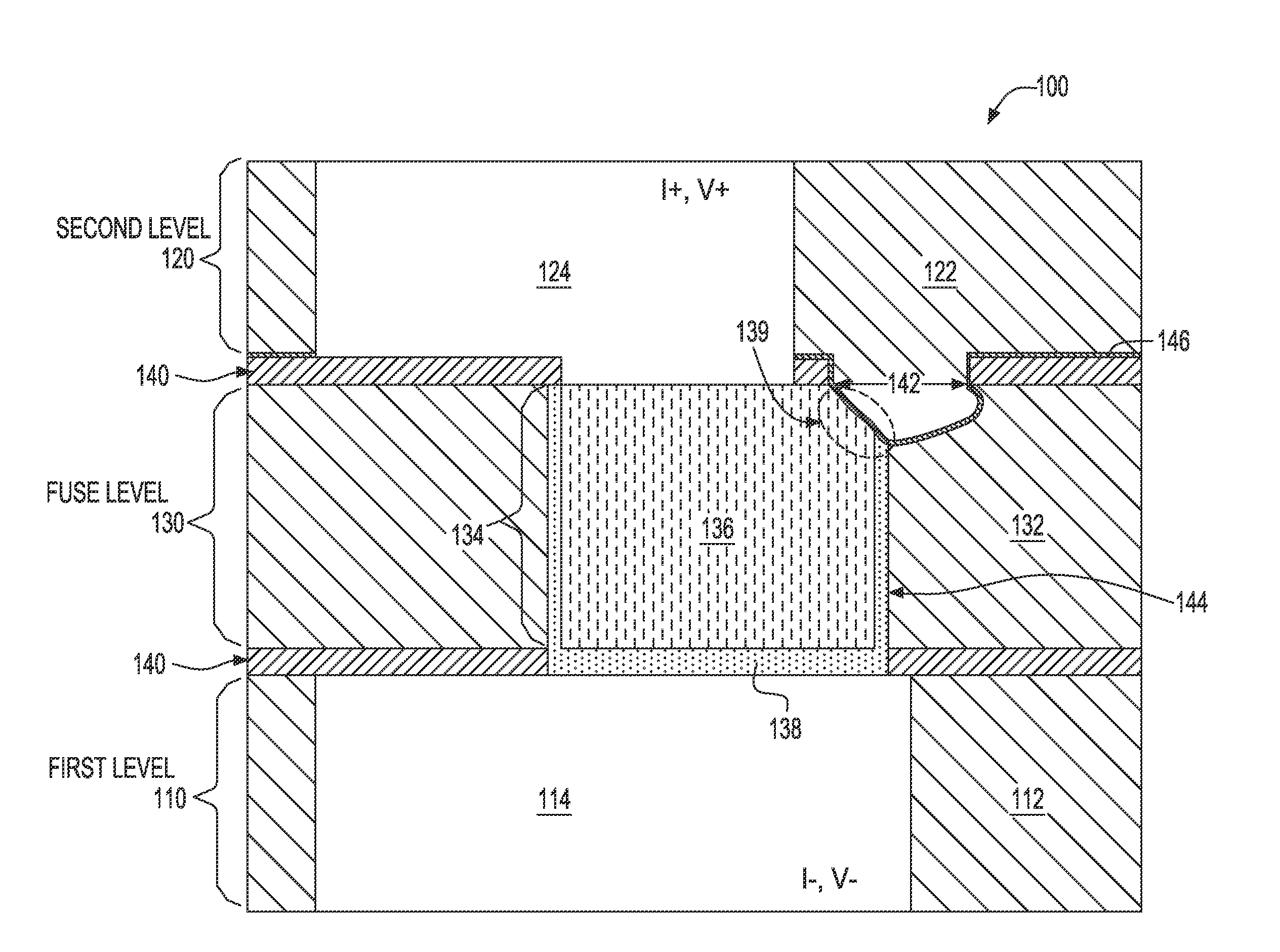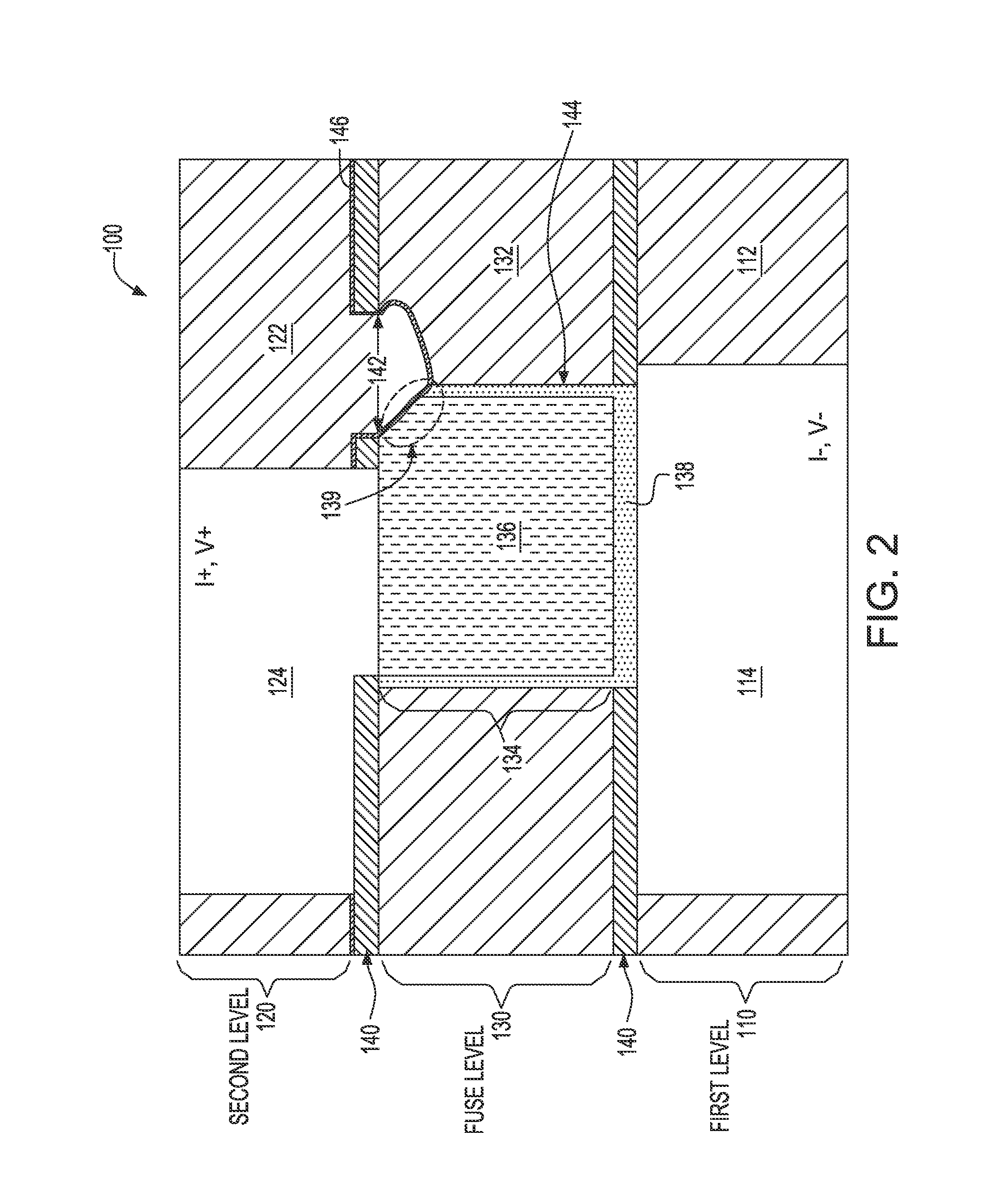Metal fuse structure for improved programming capability
a fuse structure and programming capability technology, applied in the field of electric fuses, can solve the problems of increasing the difficulty of implementing fuses at the poly level, collateral damage, dielectric material to fracture, etc., and achieve the effect of more controllable and predictable final resistan
- Summary
- Abstract
- Description
- Claims
- Application Information
AI Technical Summary
Benefits of technology
Problems solved by technology
Method used
Image
Examples
Embodiment Construction
[0025]Various embodiments of the fuse structure of the present invention are described in conjunction with FIGS. 2-6. Embodiments of methods of making the fuse structures of the present invention are described in conjunction with FIGS. 7-8f.
[0026]Referring to FIG. 2, a fuse structure 100 prior to fuse blow is illustrated. On a substrate (not shown) is a first level 110, a second level 120 and a fuse level 130. The fuse level 130 is between the first 110 and second 120 levels. Each level includes an insulator and a conductor. The levels are separated by a cap layer 140. The first, second and fuse level insulators are denoted by reference numerals 112, 122, and 132 respectively. The first, second and fuse level conductors are denoted by reference numerals 114, 124, and 134 respectively. Each of the conductors 114, 124 and 134 can include a bulk conductor and a liner. In FIG. 2, the bulk conductor 136 and liner 138 are only shown for the fuse conductor 134 for ease if viewing. It shou...
PUM
| Property | Measurement | Unit |
|---|---|---|
| Time | aaaaa | aaaaa |
| Dielectric polarization enthalpy | aaaaa | aaaaa |
| Structure | aaaaa | aaaaa |
Abstract
Description
Claims
Application Information
 Login to View More
Login to View More - R&D
- Intellectual Property
- Life Sciences
- Materials
- Tech Scout
- Unparalleled Data Quality
- Higher Quality Content
- 60% Fewer Hallucinations
Browse by: Latest US Patents, China's latest patents, Technical Efficacy Thesaurus, Application Domain, Technology Topic, Popular Technical Reports.
© 2025 PatSnap. All rights reserved.Legal|Privacy policy|Modern Slavery Act Transparency Statement|Sitemap|About US| Contact US: help@patsnap.com



